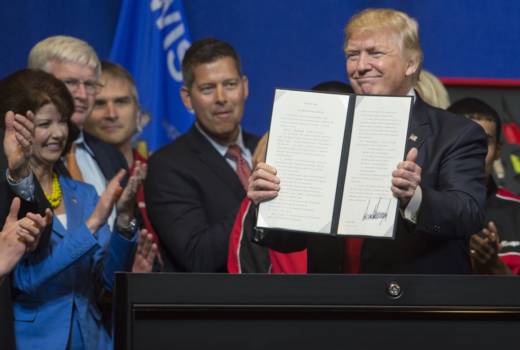President Trump hopes to revive the economic populism that helped drive his election campaign, signing an order Tuesday in politically important Wisconsin to tighten rules on technology companies bringing in highly skilled foreign workers.
Trump toured the headquarters of tool manufacturer Snap-on Inc., and then signed an executive order aimed at curbing what his administration says are hiring abuses in a visa program used by U.S. technology companies. Dubbed "Buy American, Hire American," the directive follows a series of recent Trump reversals on economic policies.
The president is targeting the H-1B visa program, which the White House says undercuts U.S. workers by bringing in large numbers of cheaper foreign workers, driving down wages. The tech industry has argued that the H-1B program is needed because it encourages students to stay in the U.S. after getting degrees in high-tech specialties — and companies can't always find enough American workers with the skills they need.
The new order directs U.S. agencies to propose rules to prevent immigration fraud and abuse in the program. They would also be asked to offer changes so that H-1B visas are awarded to the "most-skilled or highest-paid applicants," said administration officials, who spoke only on the condition of anonymity despite the president's frequent criticism of the use of anonymous sources.
Officials said the order also seeks to strengthen requirements that American-made products be used in certain federal construction projects, as well as in various federal grant-funded transportation projects. The Commerce secretary will review how to close loopholes in existing rules and provide recommendations to the president.
